Office interior design plays a significant role in creating a safe work environment. It can impact the well-being of employees and reduce the risk of accidents and injuries. Here are some ways that office interior design can impact workplace safety:
1.Ergonomic Furniture:
In an office interior design Ergonomic furniture is designed to support the natural posture of the body and reduce the risk of injuries caused by sitting or standing for long periods. Ergonomic chairs and desks can help prevent back, neck, and shoulder injuries.
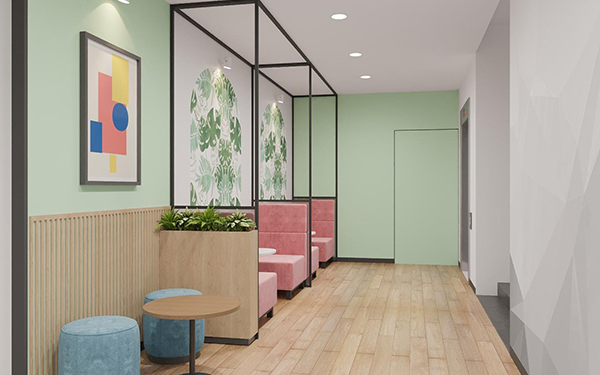
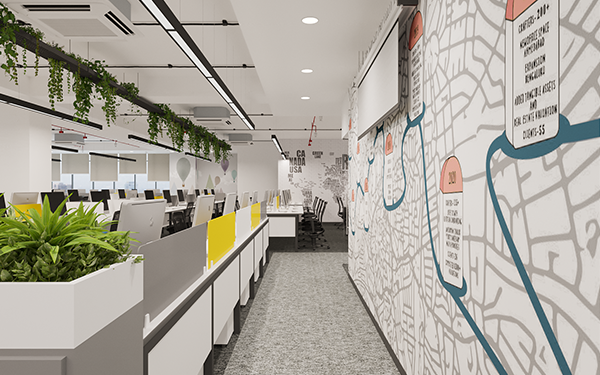
2.Proper Lighting:
In Office interior designAdequate lighting in the workplace can help prevent eye strain and accidents. Proper lighting can also help identify and prevent potential hazards such as spills and tripping hazards.
3.Color Selection:
The color of the office interior walls and furniture can impact the mood and productivity of employees. Bright colors can boost creativity, while calming colors can reduce stress levels. Selecting appropriate colors for the workplace can help prevent stress-related illnesses.
4.Ventilation and Air Quality:
For office interior design Poor ventilation and air quality can lead to respiratory illnesses and other health issues. Proper ventilation systems can help regulate the temperature and humidity levels in the office, reducing the risk of health issues.
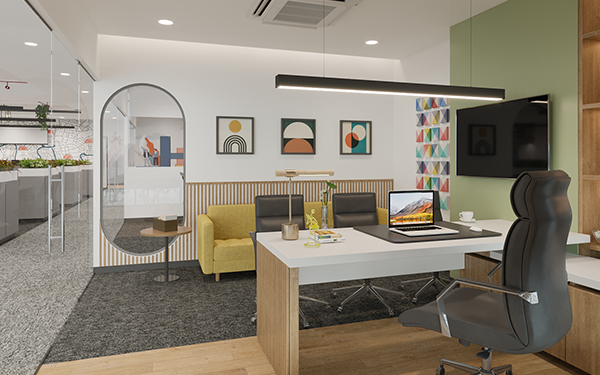
5.Acoustic Design:
Noise pollution can increase stress levels and affect employee concentration. Acoustic Office interior design elements such as sound-absorbing panels can help reduce noise levels in the office, creating a more productive and comfortable work environment.
6.Proper Signage:
Proper signage can help prevent accidents and injuries in the workplace. Clear and concise signs can help employees navigate the office interior design, identify potential hazards, and follow safety procedures.
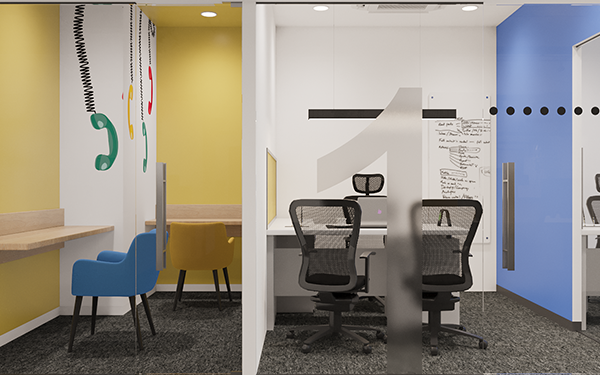
7.Safe Storage:
Proper storage solutions can help prevent injuries caused by falling objects or trips and falls. Cabinets and shelving units should be securely attached to the walls and designed to hold heavy items.
In conclusion, office interior design plays a crucial role in promoting workplace safety. A well-designed office space can help prevent injuries and illnesses, boost employee productivity, and create a positive work environment. Therefore, it is essential to consider safety aspects while designing office interiors to ensure the well-being of employees.
By incorporating these elements into Office interior design , companies can create an environment that promotes creativity, innovation, and collaboration among employees. This can lead to increased productivity, improved employee morale, and a more successful business overall.
A law office interior design is a professional space that requires careful planning and design considerations. The office interior design should reflect the seriousness and professionalism of the legal industry, while also creating a comfortable and inviting atmosphere for clients. Here are some design considerations for a law office:

1.Layout and Space Planning:
The office interior design layout should be functional and efficient, with clearly defined areas for reception, private offices, conference rooms, and a waiting area for clients. Space planning should consider privacy and confidentiality for meetings and discussions.
2.Professional Décor:
The décor of a law office interior design should reflect a professional and serious environment. Neutral colors, such as gray, white, and beige, are popular choices for walls and floors. A touch of color can be added with artwork and accessories, such as a framed law degree.
3.Comfortable Furniture:
The furniture in a law office interior design should be comfortable and functional for both clients and employees. Comfortable seating options should be available for waiting areas and conference rooms. Private offices should have comfortable chairs and desks for long hours of work.
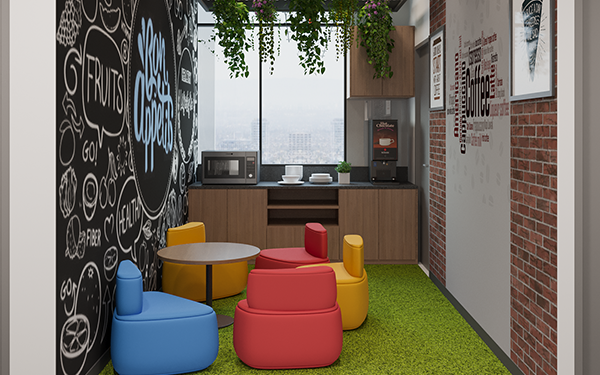
4.Technology:
Technology plays a significant role in the legal industry, and a law office design should be equipped with the latest technology. High-speed internet, video conferencing equipment, and document management systems are essential for efficient operations.
5.Storage:
Law office interior design requires a significant amount of storage for files and legal documents. Cabinets and shelving units should be designed for maximum efficiency and accessibility.
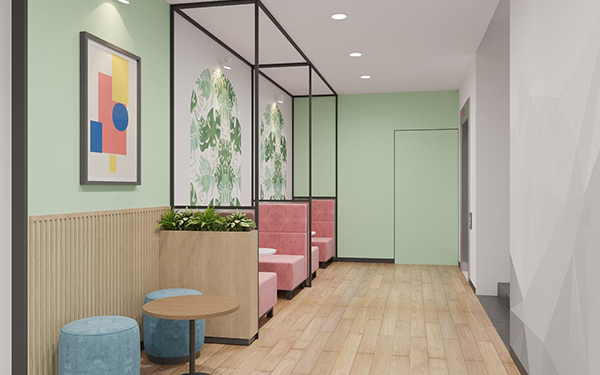
6.Lighting:
Proper lighting is essential in a law office interior design. Ample natural light can be achieved with large windows and light curtains. Adequate artificial lighting should also be installed for tasks that require focus and concentration.

7.Security:
Law office interior design requires a high level of security to protect sensitive information and legal documents. Access control systems, video surveillance, and alarm systems should be installed to ensure the safety and security of the office.
In conclusion, a law office interior design requires careful consideration of the layout, décor, furniture, technology, storage, lighting, and security. By creating a functional and professional workspace, a law office can improve the efficiency of operations, impress clients, and provide a comfortable environment for employees.
Office interior design has undergone significant changes over the years. From the traditional and rigid designs of the past to the modern and flexible designs of today, the concept of office interior design has evolved to accommodate the changing needs of the modern workforce. In this blog, we explore the various faces of office interior design, both then and now.
1.Then: The Traditional and Rigid Designs of the Past
In the past, office interior design was characterized by rigid layouts, cubicles, and monochromatic color schemes. The focus was on functionality rather than aesthetics, and the design was often geared towards maximizing space rather than promoting collaboration and productivity. The office space was seen as a place to work, not as a place to inspire or motivate employees.
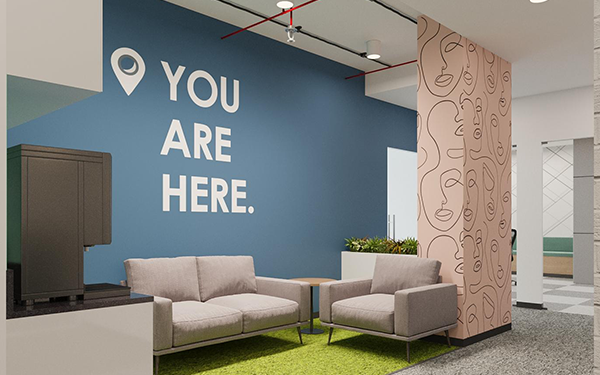
1.Now: The Modern and Flexible Designs of Today
Today, office interior design is all about creating an environment that inspires creativity, promotes collaboration, and enhances employee well-being. Modern offices feature open floor plans, flexible workspaces, and vibrant colors. The design is focused on creating an environment that encourages communication, creativity, and innovation. The office is seen as a place to inspire and motivate employees, rather than just a place to work.
2.Then: The Traditional Desk
In the past, the desk was the center of the office interior design. It was typically a large and imposing piece of furniture that served as a symbol of power and authority. The traditional desk was often accompanied by a high-back chair, creating an impression of formality and hierarchy.
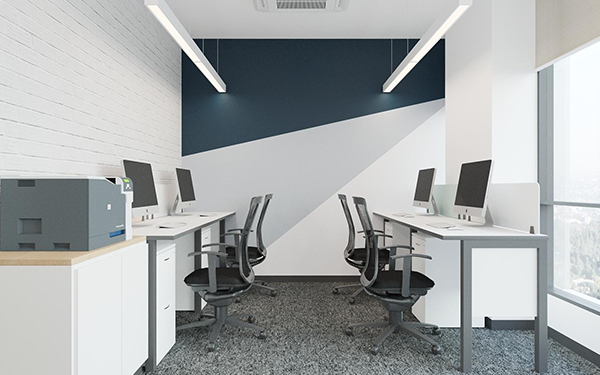
2.Now: The Modern Workstation
Today, the workstation is designed to be flexible and adaptable. The modern workstation is often modular and can be easily reconfigured to suit the needs of the employee. The focus is on creating a comfortable and ergonomic workspace that promotes productivity and well-being.
3.Then: The Closed-Door Office
In the past, the closed-door office was a symbol of power and authority. The office was often reserved for high-level executives and managers and was seen as a status symbol.

3.Now: The Open-Plan Office
Today,in office interior design the open-plan office is becoming increasingly popular. The open-plan design encourages communication and collaboration, creating an environment that promotes innovation and creativity. The open-plan design also promotes transparency and equality, allowing employees to feel more connected to the company and their colleagues.
In conclusion, office interior design has evolved significantly over the years. From the traditional and rigid designs of the past to the modern and flexible designs of today, the concept of office interior design has changed to accommodate the changing needs of the modern workforce. By creating an environment that inspires creativity, promotes collaboration, and enhances employee well-being, companies can create a workspace that supports the success of their employees and their business.
In today's fast-paced work environment, it's important for employees to have a space to relax and recharge during breaks. A well-designed break room can improve employee morale, increase productivity, and reduce stress. Here are some ways to create a relaxing break room in an office interior design space:
1.Comfortable Seating:
In office interior design ,The break room should have comfortable seating options, such as couches or chairs, where employees can sit and relax during their breaks.

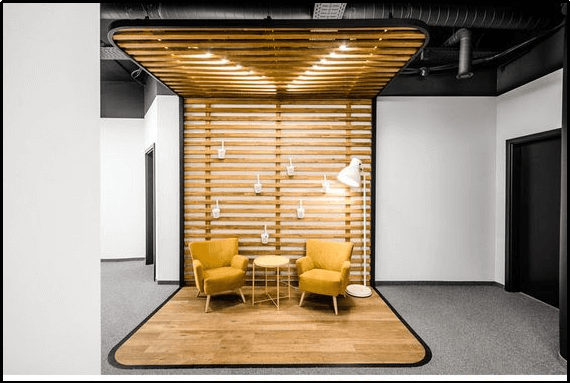
2.Natural Light:
Natural light can create a calming and relaxing environment for office interior design. If possible, the break room should have large windows to let in natural light. If the room doesn't have access to natural light, bright lighting fixtures can help simulate natural light.
3.Plants:
In an office interior design , Adding plants to the break room can improve air quality, reduce stress, and increase productivity. Plants can be displayed on shelves, tables, or in hanging planters.
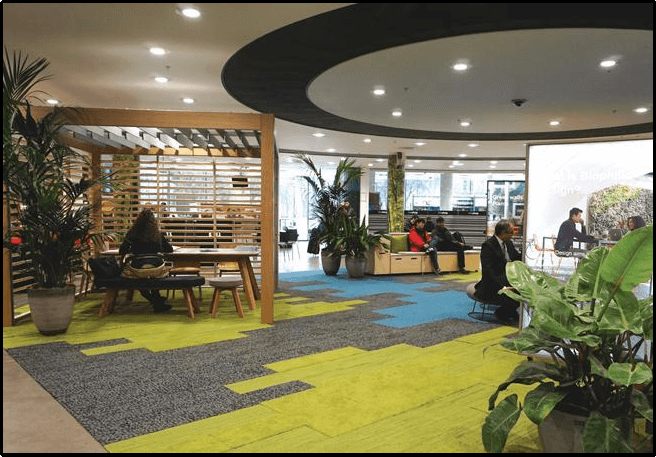
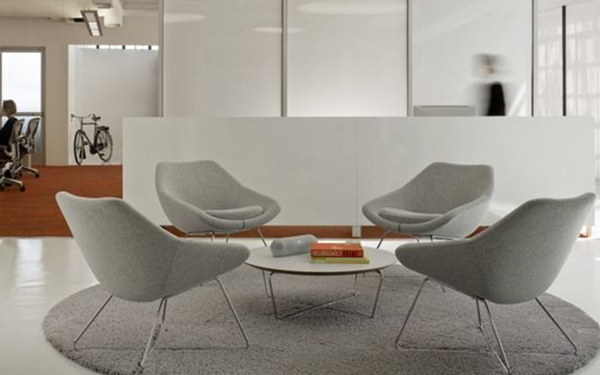
4.Snacks and Drinks:
In the kitchen of office interior design, Providing healthy snacks and drinks, such as fruit, nuts, and water, can help employees stay hydrated and energized throughout the day.
5.Games and Activities:
In the game room of an office interior design, providing Incorporating games and activities, such as board games, puzzles, or a pool table, can help employees de-stress and recharge during their breaks.
6.Decor:
Decor can help create a relaxing and welcoming atmosphere in office interior design. Artwork, decorative lighting, and comfortable rugs can all help make the space feel inviting and comfortable.

7.Technology:
Design the office interior by Providing access to technology, such as a television or a sound system, can help employees relax and unwind during their breaks.
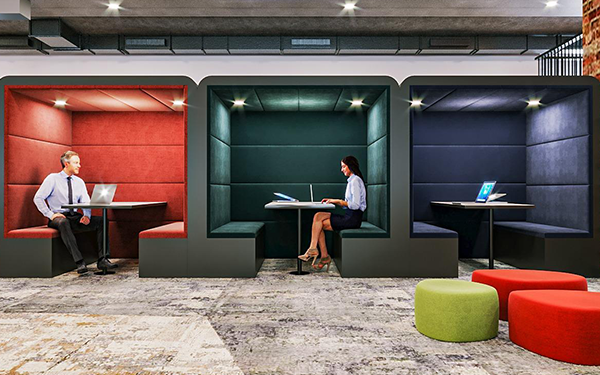
8.Privacy:
Employees may need privacy to make phone calls or to take a nap. Consider office interior design a private space, such as a separate room or partitioned area, where employees can have some privacy.
In conclusion, a well office interior design break room can help employees relax, recharge, and stay productive throughout the day. By incorporating comfortable seating, natural light, plants, healthy snacks, games and activities, decor, technology, and privacy, an office interior design can create a space that employees will look forward to using during their breaks.